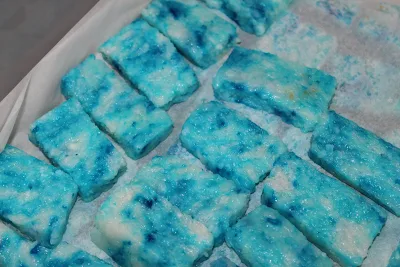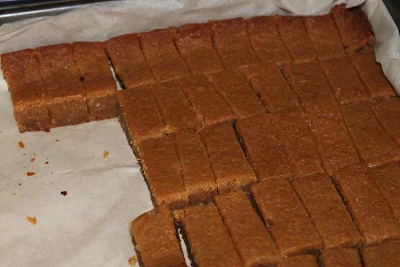Lee Fong is fair-skinned and looked typically of southern Chinese origin, but little did I know at first her Christmas Island, Indian Ocean roots until she captivated us with accounts of her childhood and early teenage years. Having come from another tropical isle, Penang, I was soon caught up with vistas and vibes of her experiences on another isle where time seemed to stand still and where the rhythm of life was almost magical, compared to the pace demanded of the denizens of Australia's capital cities.
Foong talked about the Governor's residence on Christmas Island, a usual focal point of authority and elegance in most far flung British colonies, a symbol of London's presence occupied by a distinguished government servant. What caught my imagination better was the episode when a cousin sister had her
boat swaying on heavy ocean waves, the contraption pitted against the nearby rock faces and how Fong and her sibling atop the cliffs could sense the rising risk and danger below. Fong reminded us that her parents did not know of this particular incident. Those on the land side did eventually rescue their relatives floating on the turbulent sea.
There were so many bright red crabs prowling on the land, that no human being on Christmas Island could avoid, and which many took for granted. It was a pitiful sight when many of such crustaceans found themselves inevitably overturned, stuck in a position that neither meant forward not backward. I was reminded of lemmings and the instinctive push to migrate and cross over the path of others. Fong reiterated that these crabs did not look attractive enough to be eaten by humans, but what a spectacle they caused intruding on to compounds, houses and roads.
Christmas Island is also a transit point for migrating birds flying between the Australian sub-continent and the varied landscapes of South-east Asia. This made me finally realise why the place had so much phosphate reserves - it was the biggest travel terminal in the life cycle of such winged creatures. An isle in the middle of seemingly nowhere, it still held a strategic role not just for those travelling by air, but also for humans venturing out south from India and Indonesia. Now we know why this island played a role in recent times in the arrival, containment and processing of human boat cargo trying to reach Australia.
Foong has long migrated to the suburbs of Perth, having gone to attend senior high school there, plucked away from the relatively carefree days under coconut palms and a sense of real adventure. She does recognise that her parents had to work hard, but as part of the group of children then, it was an enjoyable time of life, to soak in the salty air of ocean breezes, equatorial rainy downpours and a whole world to explore after school hours. Do children in the suburbs of Australian conurbations really have a better life?
Kindly Yours - A collection of writings, thoughts and images. This blog does contain third party weblinks. No AI content is used.
Wednesday, 4 August 2010
Sunday, 1 August 2010
Delicacies of the Straits Chinese
This glutinous rice based dessert (above), with the fanciful name of pulut tai tai, is dyed with the natural colours of the butterfly pea flower petals (bunga telang), to produce an overall pleasing marine blue effect, before applying an egg-based coconut flavoured jam, called kaya, to spread over the savoury pieces. Also refer to image below, foreground.
The diverse and delectable variety of kueh from the Peranakan or Straits Chinese tradition.
With demands in attention to detail, emphasis on texture, presentation and making use of natural ingredients from home and garden, this cuisine requires lots of experience, practice and heart to produce palate sensations that demonstrate personal rigour, patience and art. Families from Malacca, Singapore, Penang, Medan and Phuket now have members spread out across a diaspora across the main Anglo-Celtic nations of the United Kingdom, New Zealand, Australia, the United States of America and Canada, which now may serve as the next possible vehicles to continue this cuisine.
The seri muka, or literally smooth face, an afternoon dessert that is cut to bite -sized slices when served. The resulting slices have a white underlay beneath the thinner green top, and reminds one of flavours wrung from the pandanus leaves common in the equatorial belt. The image above was taken from the kitchen of Susan Chan in Carlingford, Sydney.
Tapioca-based savoury cakes, or the chu chu kueh, is best relished with a crunchy top over a moist body, and best complimented with Chinese tea. The above image shows the chu chu kueh courtesy from the kitchen of Susan Chan in Carlingford, Sydney.
Influenced heavily by the Malay denizens of South -east Asia, and rooted steeply in Chinese and Indian immigrant traditions, this cuisine covers all stages of the meal cycle in a home, from breakfast to dinner. The nasi lemak of Straits Chinese inspiration is modified from its Malay cousins. Although the coconut milk flavoured white fluffy rice continues to be the foundation of this dish, the Straits Chinese chose a lighter approach to accompany the rice - instead of curries, we now have lightly toasted peanuts, fresh cuts of cucumber, crunchy anchovies, hard boiled eggs, aromatic fried pieces of crispy fish and the compulsory dash of chili and lime juice enhanced condiment called the sambal.
The kow chan kueh (above) or nine-layered cake, is essentially made of rice flour, and topped off with pink and orange-red colouring, lovingly set with coconut milk and flavoured with knotted pandan leaves. This cake brings particularly poignant memories to me of growing up and living on Penang Island.
The yogurt cake (above) may look on first impressions to be a cousin of the jelly cake (below) , but requires ingredients of instant coffee and cocoa.
An Australian Market Day
The tropical jackfruit - above.
Image above - organic bananas on offer.
Image above - Lebanese cucumbers.
Image above - Aussie-grown paw paws.
The sights above were captured at Belconnen Markets on a winter's day in the Australian Capital Territory on 18 July 2010.
Tuesday, 27 July 2010
The Making of Bun Chien Kueh
A pancake, with either thick or thin dough, crunchy and usually garnished with peanuts and sugary stuff - an ideal opener for the palate at teatime or even for breakfast. The bun chien kueh, or wrapped fried cake, originated from southern China and has cousins of sorts from Japan to Indonesia. Shown here is the version most often available in the food courts and streets of towns in both Malaysia and Singapore.
The process starts with mixing, pouring and monitoring on a sufficiently hot plate.
The freshly made wrap (above) is gingerly taken from the cooker to be sprinkled with ingredients of your choice (below).
Peanut granules are spread carefully over actual white sugar on top of the inside of the pancake.
Next to ready, the bun chien kueh is then folded like an envelope (above) and then cut into slices (below).
Monday, 26 July 2010
Orthodox Icon
The Serbian Orthodox Church in Forrest in the Australian capital of Canberra is a gem of murals, religious history, national pride and cultural perspectives. It is located a short drive from Parliament Circle and the trendy dining district of Manuka.
Image above - Saint Constantine points to the heavenly sign that converted him to Christianity whilst he was Emperor.
Subscribe to:
Posts (Atom)
Happy 60th, Singapore
Happy 60th, Singapore. 9 August 1965 to today. A nation whose leader seriously reckoned would not last on its formation. An island republic...
-
Let us look at some nations with no land boundaries, not sharing some of the problems and opportunities with another state crossable by ro...
-
I am standing along a suburban street lined mostly with unassuming shops. The only place seemingly abuzz durinv the daytime is the local...
-
So it is Sunday. An afternoon to turn to trivial things. Eatery reviews these days are within an environment post Covid that has to deal ...































